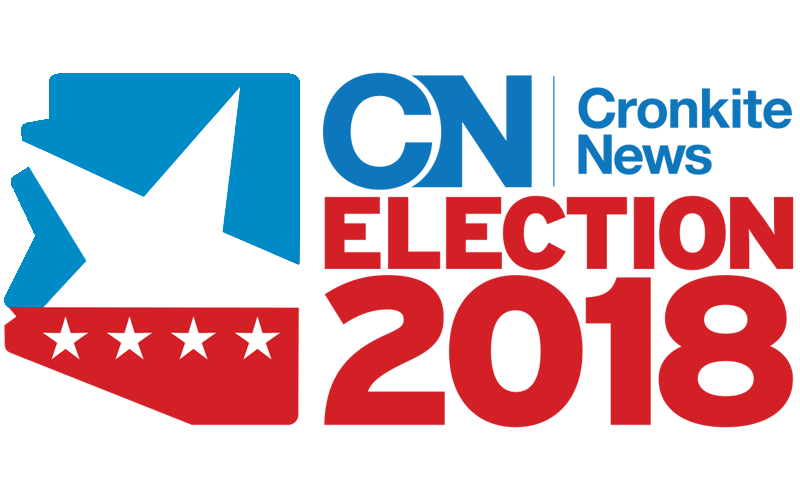WASHINGTON – Young Arizonans are casting ballots at more than three times the rate they did in 2014, according to an analysis of early voting, the possible result of such high-profile voter registration efforts as March for Our Lives.
Despite the surge, however, young voters still have a long way to go to overtake their elders: Even though they are one of the largest groups of voters, the estimated 84,207 ballots cast so far by 18- to 29-year-olds accounted for just 7.5 percent of more than 1.1 million that had been cast as of earlier this week, when the analysis was done.
“Even while we’re seeing growth, and significant growth in turnout especially among younger voters, there’s still very long ways to go to get to the point where most young people are actually coming out and having their voice heard through the ballot box,” said Tom Bonier, CEO of TargetSmart.
Still, while voter turnout this year “is up across the board … the fact of the matter is there’s no group that’s showing a larger increase in turnout than younger voters,” Bonier said.
His Washington research firm analyzes data from local, state and county election offices across the nation. According to its analysis of Arizona data, 84,207 ballots have been cast by young voters so far in this midterm election compared with 26,573 ballots before Election Day 2014.
Bonier said he first noticed an increase in youth voter registration this spring, particularly in the weeks after the mass shooting at Marjory Stoneman Douglas High School in Parkland, Florida, in which 17 people were killed. That sparked the March for Our Lives movement, which had increased civic participation and voter registration as two of its main goals.
“The rhetoric that they were putting out there in these rallies and in the press was really focused on elections, on registering to vote and voting,” Bonier said, despite skepticism that “younger people just tend not to vote, and certainly not in midterm elections.”
Another voter effort is NextGen America, which has expanded from its original focus on climate advocacy to include progressive positions on such issues as health care and immigration.
The group says it has spent $3.4 million in Arizona this year on get-out-the-vote and registration efforts, including text messages, direct mail, digital ads, going door-to-door and canvassing on campuses. It says it has registered more than 21,000 Arizonans to vote.
“We’ve been spending the last month making sure they have all the information they need, providing voter guides so they know where candidates stand on the issues, we’ve been providing rides to the polls so they can get out and vote,” said Jalakoi Solomon, state director of NextGen Arizona.
Solomon credited much of the higher registration to anger toward the Trump administration. That was echoed by Bill Scheel, a partner at Phoenix political consultancy firm Javelina, who said the “national environment” after President Donald Trump’s inauguration launched a wave of activism centered on issues young voters find important.
“Across the board, you see increased engagement in a variety of populations that have felt threatened by the Trump administration, and young people obviously are affected by them as well,” Scheel said, pointing to issues like climate change and women’s reproductive rights.
TargetSmart’s analysis estimates that 57 percent of Arizona’s young early voters are Democrats and 35 percent are Republicans, with 7 percent undetermined. Overall registration in Arizona is 31 percent Democratic and 34.6 percent Republican.
Generally, younger voters do tend to lean to the left on the political spectrum, Phoenix political analyst Jason Rose said. But that doesn’t last forever.
“Younger voters are more idealistic, they’re not ‘nationalistic,’ what the president calls himself,” Rose said. “As they get older, they become more tribal and more Republican, that’s the natural evolution of a voter.”
But Bonier said issues are more important to young voters than party affiliation.
“More and more of them actually self-identify as independents, they’re less likely to identify with one party or another,” Bonier said, even though they still tend to vote Democratic.
“It’s less about identification with a party with a structure, and it’s more with an identification with specific issues, specific candidates.”
The surge in young voters does not mean that all, or even most, of eligible young voters will cast ballots this year. As of Friday, when almost 1.5 million early ballots had been recorded by the Arizona Secretary of State’s Office, the average age of early voters was just less than 59.
Scheel said one way to increase young voter turnout is to field more-representative candidates.
“If you’ve got older white men running for office, which is frequently the norm, having alternatives – younger men and women, people of color – that is very helpful as well,” he said. “Almost 50 percent of our millennial population here in Arizona are people of color, and having candidates that reflect that diversity, I think, is very important.”
Bonier said it’s unfortunate that what’s being touted as high voter turnout this year “is likely slightly more than half of eligible adults voting, and among younger people that’ll be even lower.”
The only way younger voters can make a significant difference in an election is if they show up, he said.
“That’s something elected officials remember,” Bonier said. “If they see a wave and they see a massive surge in youth turnout, that’s something they’re going to pay attention to, and when it comes to legislating and policy, they’re going to be much more likely to be attuned to those younger people and listening to their voices and paying heed.”
Connect with us on Facebook.

